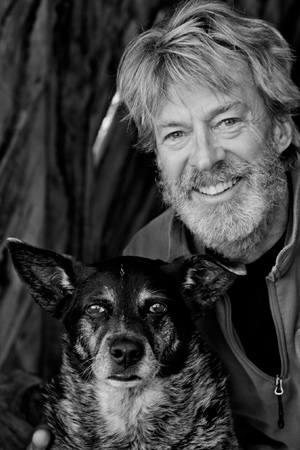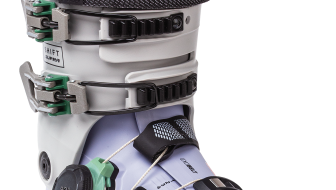Ace Kvale has been on the forefront of adventure photography for the past 40 years, with subjects ranging from Himalayan peaks to the valleys of his southern Utah home. Kvale, 62, kickstarted his career in the ski industry as an athlete and model before moving behind the lens in the 1980s. Since then he’s been a prolific contributor to ski publications like Backcountry and Powder, as well as photographic heavyweight National Geographic. Even with these impressive credentials, he takes the time to work with the next generation of photographers, including 27-year-old Backcountry contributor Mary McIntyre.

Ace Kvale kickstarts his career in Verbier, Switzerland in the 1980s.’ [Photo] Mark Shapiro
I met Ace when I was 16 and living down in southern Utah for the summer. Taking trips with him out in the wild, remote canyons—where he spends most of his time—got me more interested in outdoor photography. Over the next few years, we stayed in touch as he traveled the world, working on a variety of incredible projects. That was enough to pique my interest in practicing photography more seriously.
He doesn’t do much ski photography anymore, but that’s how he got his career started and how he made a name for himself. He tells stories about the early days of backcountry gear and how fun it was just being out there shooting with friends every day—it was great to realize that was an actual job option for me. Hanging with Ace opened my eyes to those possibilities.
He transitioned from powder skiing to big mountaineering trips in the Himalaya. Those are definitely some of my favorite images of his, the huge mountains that his photos allow you to see up close. Now he’s into trekking and cultural photography. I think the way he interacts with people on these trips is exceptional, and his portraits let that shine through.
I’ve been lucky enough to go to the Himalaya twice with him, and he has a unique way of approaching people and getting them to open up. His rule is that you never want to take a photo of someone who doesn’t want their photo taken. If you have a connection with someone before you take a shot, it’s going to be a much more powerful image anyway. I think that ethos of not snapping someone’s picture and potentially violating them by taking something from them but instead actually sharing something with them—that’s probably the biggest thing I’ve learned from him. That’s why portraits are my favorite images of his; it’s because of that connection he forms with his subjects.

Kvale and Ghengis Khan, who writes the Desert Dawg Adventure Blog. [Photo] Courtesy Ace Kvale
Ace is always trying to improve me as a photographer. He is always trying to include me and open doors; he’s not protective of his subjects or material. He doesn’t say, “I’m shooting this so you can’t shoot it.” When we’re on trips, he makes a point to show me something interesting he’s noticed so we can both appreciate it and work with it. He’s there to take photos for himself, but it’s not an exclusive thing.
When he was my age, he was out shooting hard a lot of the time, but I think it was always about the art for him—even with ski photos. Of course action and adrenaline were always part of the mix, but his attention to detail in the snow, light and shadows made his transition into travel and cultural photography very natural. His most famous photos these days are images of the faces and hands of people he’s met around the world, doing earthquake relief, participating in cataract eye surgery camps and leading treks to remote valleys in the Himalaya. He’s interested in the story behind each image, and that’s what makes those images so powerful.










Related posts:
Make it Count: How to get the most out of travel
Anna Soens reframes the conversation on athletic achievement in the mountains
How a little solar gain on Mt. Baker, Wash. led to big consequences
The Friendly Frankenboot: With their new Hoji Pro Tour, Dynafit builds a more accommodating monster